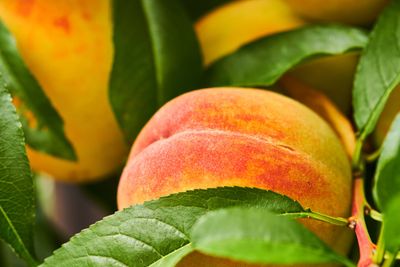What are Golden Jubilee Peaches?
Golden Jubilee peach trees produce mid-season peaches that can be grown in cooler climates. They need about 800 chilling hours, temperatures below 45 F. (7 C.), to set fruit. They are a hybrid peach whose parent is the Elberta peach. The Golden Jubilee peach variety produces yellow-fleshed, sweet and juicy, freestone peaches that are ready for harvest in summer. The trees bloom in the spring with scented pink-tinted blossoms, which give way to yellow fruit with a flush of scarlet that can be used for canning or eating fresh. Golden Jubilee peach trees are available in both dwarf and standard sizes and will attain heights of between 15-25 feet (4.5 to 8 m.) with an 8-20 foot (2-6 m.) spread. It is a rapidly growing tree that is adaptable to a variety of soils as well as cool climates. Golden Jubilee will begin bearing at the age of 3-4 years.
How to Grow a Golden Jubilee
Growing a Golden Jubilee peach tree is an excellent choice for gardeners with smaller landscapes because it is self-fruitful, meaning it doesn’t require another peach for pollination. That said, like many self-fruitful trees, it will benefit from having another peach nearby. Plan to plant the tree in the spring when it is still dormant. Pick a site that is in full sun, with at least 6 hours of sun per day. While Golden Jubilee peaches are not too picky regarding their soil, it should be well draining and with a preferred pH of 6.5. Soak the roots of the tree for 6-12 hours prior to planting. Dig a hole that is as deep as the container the peach is in and a bit wider to allow for spreading the roots. Put the tree in the hole, spreading the roots out gently, and backfill with the removed soil. Tamp down around the tree. Golden Jubilee should be watered in well after planting. Thereafter, rainfall may be sufficient irrigation, but if not, water the tree with an inch (2.5 cm) of water per week. Lay a layer of mulch around the tree, taking care to keep away from the trunk, to retain moisture and retard weeds.
